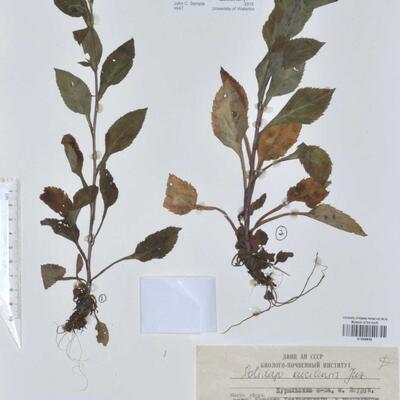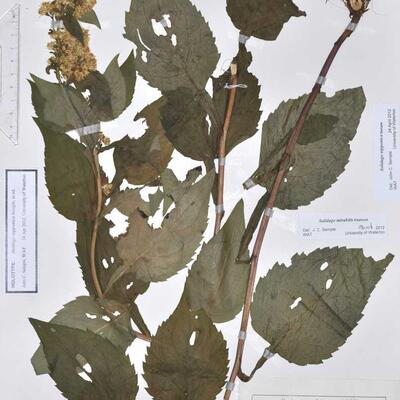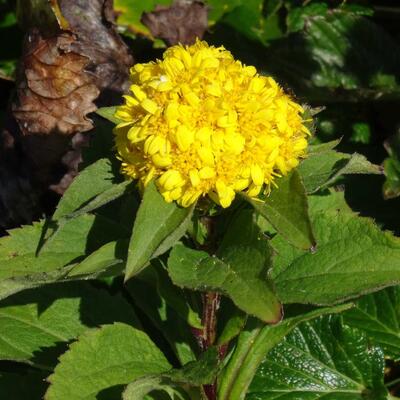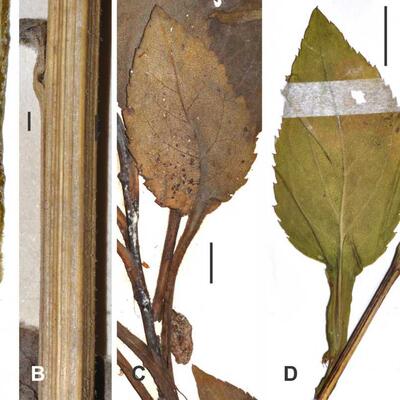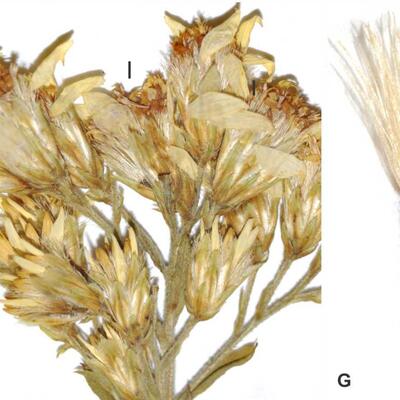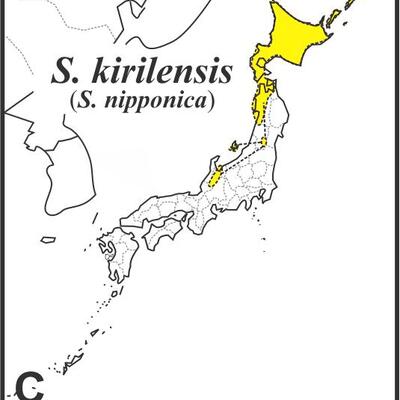Department of Biology
ESC 350
200 University Ave. W
Waterloo, Ontario, Canada N2L 3G1
Phone: (519) 888-4567 ext. 32569
Fax: (519) 746-0614
Solidago kurilensis Juzepczuk was described in 1959 in the Flora U.S.S.R. with a type collection from Sikotan Is. {Shikotan Is.} near the southern end of the Kuril Islands archipelago; the island is about 75 km NE of the eastern most point on Hokkaido Is., Japan. I have seen a digital image of the holotype sent to me by LE Herbarium, Russian Academy of Sciences at the V. L. Komarov Botanical Institute in St. Petersburg, Russia. One of the two shoots on the sheet has a semi-corymbiform inflorescence with ascending long lower branches, and the lower stem leaves have blades with tapering bases. The second shoot has an paniculiform inflorescence with short lower branches, and the most basal stem leaf has a truncate blade base. I have also seen a collection (ALA) from Iterup Is. {Yetorofu Island} which is located NE of Shiktan Is. on the main arch of the Kuril archipeligo. I annotated this latter collection as S. nipponica in 2015 before seeing the image of the type of S. kurilensis. The range of S. kurilensis includes the southern Kuril Islands in Russia, Hokkaido Is., and northern Honshu Island and smaller nearby coastal islands in Japan.
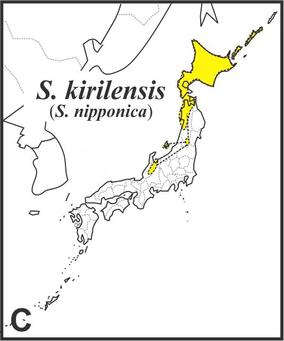
Semple et al. (2020) presented a multivariate study of Solidago sect. Solidago and concluded that S. nipponica Semple was a synonym of S. kurilensis as is S. mirabilis Kitam. Solidago nipponica was treated as a separate species on this web site until the publication of Semple et al. (2020). The molecular study of Sakaguchi et al. (2018) provided evidence for recognizing S. nipponica and thus S. kurilensis, but unfortunately their paper adopted the nomenclature of the S. virgaurea complex followed in Iwatsuki et al. (1995) that included the misapplication of the names based on Amphiraphis leiocarpa Benth (Solidago virgaurea ssp./var. leiocarpa), which is a synonym of S. decurrens. Semple et al. (2020) designated the holotype of A. leiocarpa as the neotype of S. decurrens because both names were based on collections from the Hong Kong area of China. Sakaguchi et al. (2018) found some evidence of possible hybridization at higher elevations between S. kurilensis (mislabeled as S. virgaurea var. leiocarpa) and S. decurrens (syn: S. virgaurea var. asiatica). The two species can be difficult to distinguish at higher elevations on northern Honshu Is., if the inflorescence is very small and basal and lower stem leaf shape is hidden or the leaves are absent. The type of S. nipponica is a very large shoot, while the type of S. kurilensis is lower mid size. Nearly all plants of S. kurilensis have truncate lower stem leaves, rather flat-topped inflorescences or flat-topped inflorescence branches of large inflorescences with branches developing well down the stem, and ovaries/fruit bodies with few to many hairs over much of the surface. Even very small plants of S. kurilensis have truncate lower stem leaves and flat-topped to rounded corymbiform inflorescences. Shoots of S. decurrens var. decurrens have narrower paniculiform inflorescences, lower stem leaves with blades with tapering bases, and glabrous ovaries/fruit bodies or rarely with a few hairs on the upper half. Statistically, S. kurilensis was strongly supported in the multivariate study of Semple et al. (2020).
Solidago kurilensis, Barkalob s.n. (ALA) from Iturup {Etorofu‑to} Is., southern Kuril Islands, Kurilskyi Obl., Russia
Solidago kurilensis, holotype of S. nipponica, Horii 1524 KYO from Japan
Solidago kurilensis, small plant, Rebun Is., Hokkaido, Japan (photo by Yuzu Sakata)
Solidago kurilensis, stems and leaves, Semple et al. (2020 Fig 13)
Solidago kurilensis, heads and cypsela, Semple et al. (2020 Fig 13)
Solidago kurilensis range draft JCS
Iwatsuki, K., T. Yamazaki, D.E. Boufford, and H. Ohba (eds.). 1995. Flora of Japan, Vol. IIIb: Angiospermae, Dicotyledoneae, Sympetalae (b). Kodansha, Ltd., Tokyo.
Sakaguchi, S., T. Kimura, R. Kyan, M. Maki, T. Nishino, N. Ishikawa, A.J. Nagano, M.N. Honjo, M. Yasugi, H. Kudoh, P. Li, H. Jae Choi, O.A. Chernyagina, and M. Ito. 2018. Phylogeographic analysis of the East Asian goldenrod (Solidago virgaurea complex, Asteraceae) reveals hidden ecological diversification with recurrent formation of ecotypes. Ann. Bot. 121: 489–500.
Semple, J.C., Y. Ma, L. Tong, and M. Sorour. 2020. A multivariate morphometric analysis of Solidago sect. Solidago and S. sect. Multiradiatae (Asteraceae: Astereae). Phytoneuron 2020-38: 1–59.
Last updated 15 May 2020 by J.C. Semple
© 2020 J.C. Semple, including all photographs unless otherwise indicated
